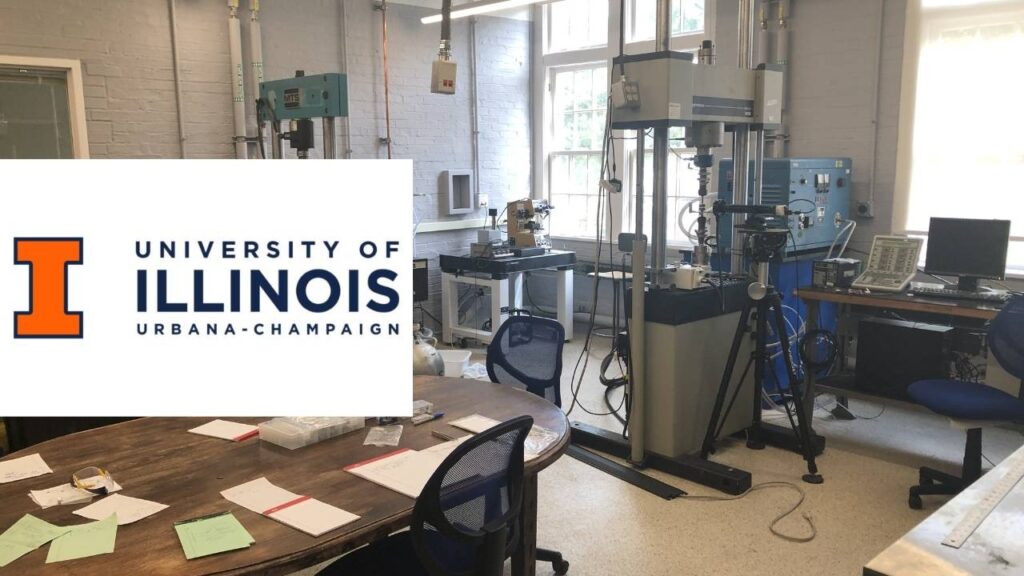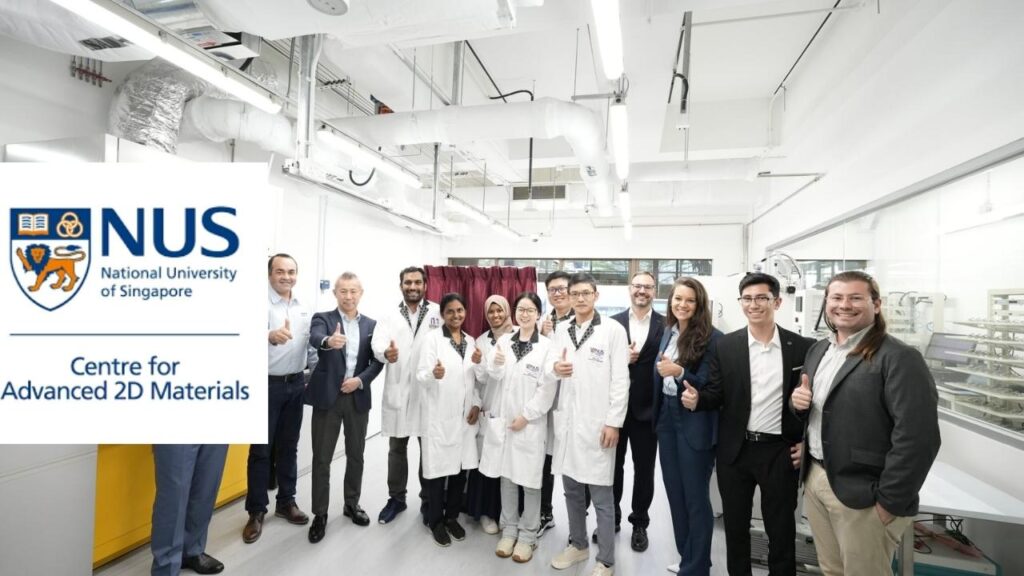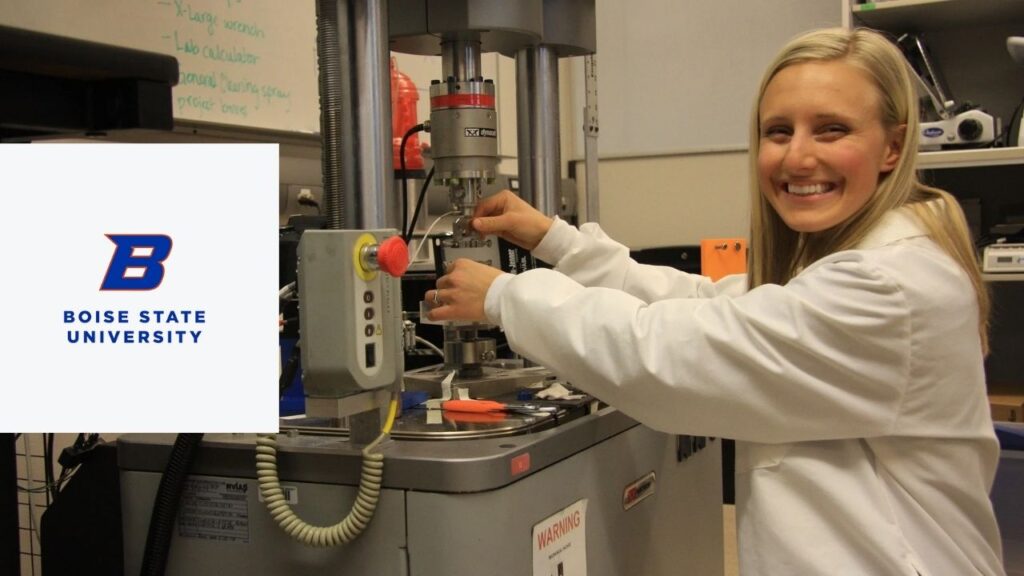Top 5 University Labs Leading the Future of Smart Materials in 2025: Smart materials are changing the way we live, work, and interact with the world. From self-healing structures to flexible electronics, these materials can respond to their environment in amazing ways. In 2025, the research driving these innovations is led by some of the most advanced university laboratories around the globe. This article explores the top 5 university labs leading the future of smart materials, explaining their work, breakthroughs, and what it means for industries and everyday life.

Whether you’re a student, professional, or simply curious, this guide will help you understand why smart materials matter, who is innovating in the field, and how you can follow or even join this exciting scientific journey.
Table of Contents
What Are Smart Materials?
Smart materials are materials that can sense changes in their environment and respond automatically without human intervention. For example, a smart material might change its shape when heated, repair itself when cracked, or conduct electricity only when stressed.
These materials are used in aerospace, healthcare, electronics, and energy, helping improve efficiency, safety, and sustainability. With rapid advancements in science and engineering, smart materials are becoming more versatile and affordable.
Top 5 University Labs Leading the Future of Smart Materials in 2025
| University Lab | Location | Specialization | Notable Innovations |
|---|---|---|---|
| Smart Materials Lab (SML) – NYU Abu Dhabi | Abu Dhabi, UAE | Adaptive molecular crystals | Self-healing crystals, flexible organic semiconductors |
| University of Illinois Urbana–Champaign | Illinois, USA | Self-healing polymers | Durable aerospace composites |
| Centre for Advanced 2D Materials (CA2DM) – NUS | Singapore | Graphene & 2D materials | Flexible electronics, spintronics |
| Zernike Institute for Advanced Materials | Groningen, Netherlands | Functional nanomaterials | Nanoscience, adaptive bio-inspired materials |
| Smart Materials and Systems Lab (SMSL) – Boise State | Idaho, USA | Magnetostrictive & piezoelectric | Energy harvesting, structural health monitoring |
The top university labs leading the future of smart materials in 2025 are pushing the boundaries of what materials can do. From NYU Abu Dhabi’s adaptive crystals to Boise State’s multifunctional sensors, these labs are creating smarter, more sustainable technologies that will impact every industry. Whether you’re a student or a professional, understanding and engaging with smart materials research can open doors to exciting opportunities in science and technology.
1. Smart Materials Lab (SML) – NYU Abu Dhabi, UAE

At the forefront of smart materials research, NYU Abu Dhabi’s Smart Materials Lab (SML) focuses on adaptive molecular crystals and organic electronics. This lab is pioneering self-healing and shape-memory materials that can flex, bend, and return to their original shape without damage. Their research aims to develop flexible, durable materials that can be used in wearable health devices, energy-efficient electronics, and environmental sensors.
Why It Matters: The ability for a material to heal itself can reduce waste and costs in manufacturing and maintenance, making products more sustainable and reliable. For example, a cracked smartphone screen that heals itself could save consumers hundreds of dollars.
Example: SML researchers created organic crystals that can bend like rubber bands and return without breaking, opening the door for flexible smartphones and soft robotics.
2. University of Illinois at Urbana–Champaign (UIUC) – USA

UIUC’s smart materials research is led by Professor Nancy Sottos, who has been a pioneer in self-healing polymers since 2000. Their lab develops advanced polymer matrix composites that automatically repair cracks, extending the lifespan of materials used in aerospace, civil infrastructure, and medical devices.
Impact: These self-healing materials are crucial for applications where safety and longevity are vital. Imagine an airplane wing that can repair tiny cracks during flight or a bridge that strengthens itself against weather damage.
Data Point: The global market for self-healing materials is projected to reach $3.5 billion by 2027, growing at over 20% annually.
3. Centre for Advanced 2D Materials (CA2DM) – National University of Singapore (NUS)

The CA2DM is a leading research center specializing in graphene and other two-dimensional (2D) materials. Their work focuses on spintronics, valleytronics, and creating composites that can monitor stress using non-invasive optical methods.
Why It’s Exciting: 2D materials like graphene are only one atom thick but incredibly strong and conductive. They promise breakthroughs in flexible electronics, ultrafast computing, and next-generation sensors.
Example: CA2DM developed flexible electronic devices that can bend and stretch without losing conductivity — perfect for wearable health monitors or foldable smartphones.
4. Zernike Institute for Advanced Materials – University of Groningen, Netherlands

The Zernike Institute integrates physics, chemistry, and biology to study functional nanomaterials at atomic and molecular scales. Their interdisciplinary research produces bio-inspired smart materials that mimic nature’s efficiency and adaptability.
Applications: These materials can be used in drug delivery, environmental cleanup, and energy-efficient buildings. For instance, materials that adapt to sunlight to optimize heating or cooling inside a house.
Example: Zernike researchers created materials that change color and reflectivity based on temperature, which could lead to smart windows saving energy in buildings.
5. Smart Materials and Systems Laboratory (SMSL) – Boise State University, USA

The SMSL combines multifunctional smart materials with advanced manufacturing and modeling. Their specialties include magnetostrictive, piezoelectric, and shape-memory materials used for energy harvesting, sensing, and structural health monitoring.
Real-World Uses: SMSL’s research is vital for developing sensors that monitor infrastructure like bridges and pipelines in real-time, preventing failures and costly repairs.
Example: The lab developed sensors that use piezoelectric materials to generate electricity from mechanical stress, powering wireless sensor networks in remote locations.
How Smart Materials Are Shaping the Future

Smart materials improve efficiency, durability, and sustainability across many sectors:
- Healthcare: Flexible implants and wearable sensors for continuous health monitoring.
- Aerospace: Lightweight, self-repairing components improve safety and reduce maintenance.
- Consumer Electronics: Foldable phones and flexible displays.
- Energy: Materials that adapt to environmental changes optimize solar energy capture and reduce waste.
- Infrastructure: Self-monitoring buildings and bridges prevent disasters by detecting structural issues early.
Practical Advice: How to Get Involved in Smart Materials Research
If you’re inspired to join the future of smart materials, here’s a simple roadmap:
- Education: Pursue degrees in materials science, chemical engineering, physics, or related fields. Look for universities with strong smart materials research labs.
- Skills: Build expertise in nanotechnology, polymer chemistry, and computational modeling. Learn lab techniques like spectroscopy and microscopy.
- Research: Seek internships or research assistant positions at leading labs such as those mentioned above.
- Stay Updated: Follow journals like Advanced Materials and Smart Materials and Structures and attend conferences like the Materials Research Society (MRS) meetings.
- Networking: Connect with professionals on platforms like LinkedIn and research collaborations.
Scientists Achieve Room-Temperature Superconductivity — What It Means for Tech and Energy
MIT Researchers Develop Transparent Solar Panels for Windows and Mobile Devices
The Rise of Wearable Technology: Materials That Make Smart Clothing Possible
FAQs About Top 5 University Labs Leading the Future of Smart Materials in 2025
Q1: What are the most common types of smart materials?
A: Common types include shape-memory alloys, piezoelectric materials, magnetostrictive materials, self-healing polymers, and responsive hydrogels.
Q2: Are smart materials expensive?
A: Initially, yes, but costs are decreasing as manufacturing techniques improve and demand increases.
Q3: Can smart materials be recycled?
A: Some smart materials can be recycled, but it depends on the type. Research into sustainable smart materials is ongoing.
Q4: How long before smart materials become mainstream?
A: Many smart materials are already in commercial products, but widespread adoption in all industries may take 5-10 years.



















